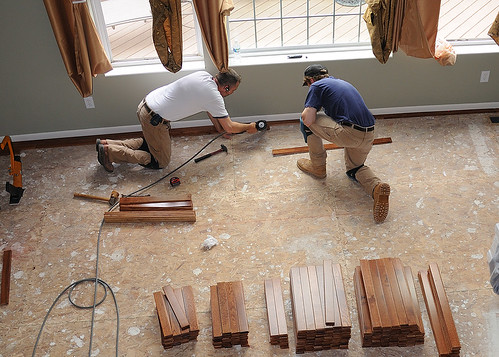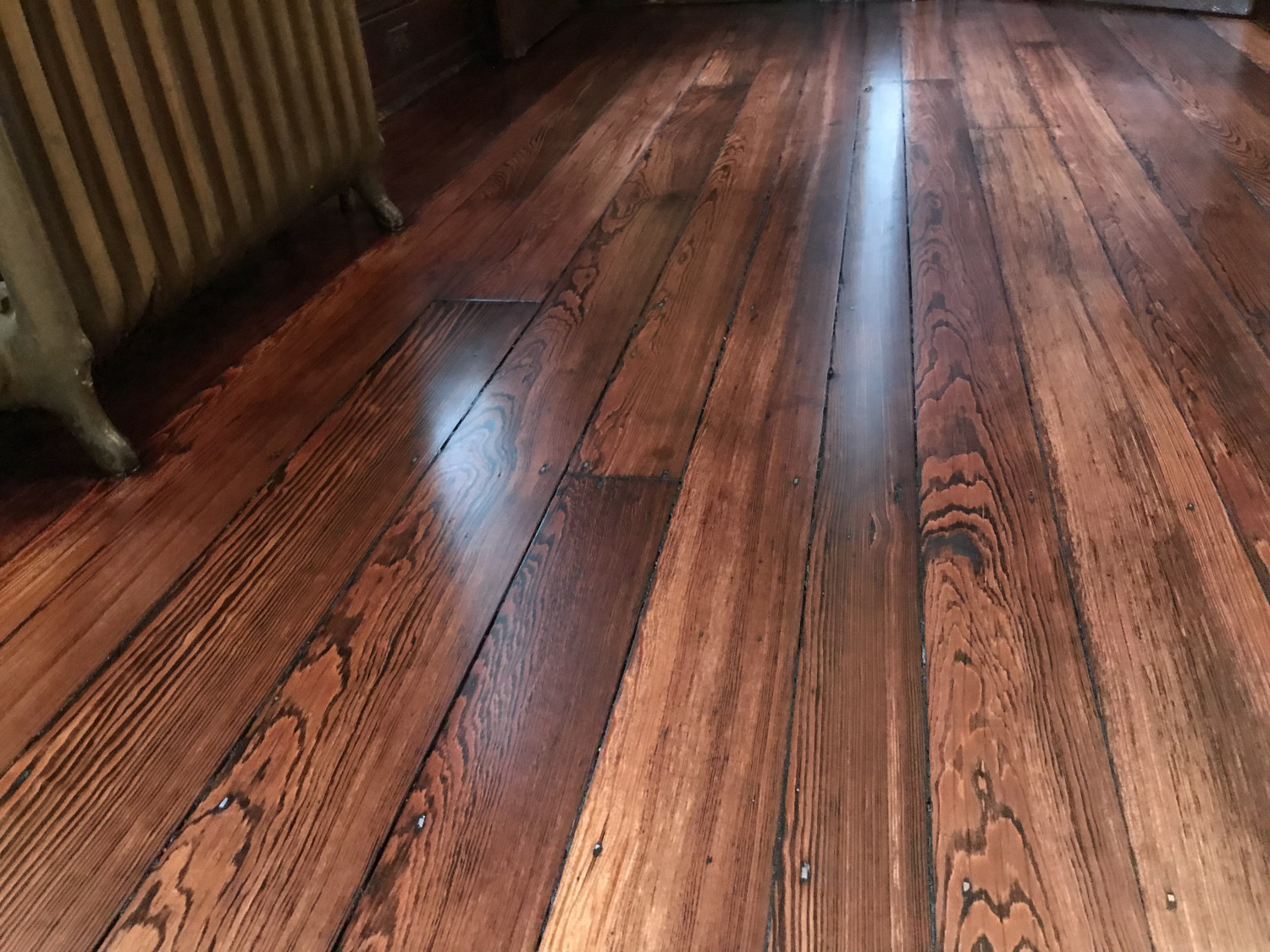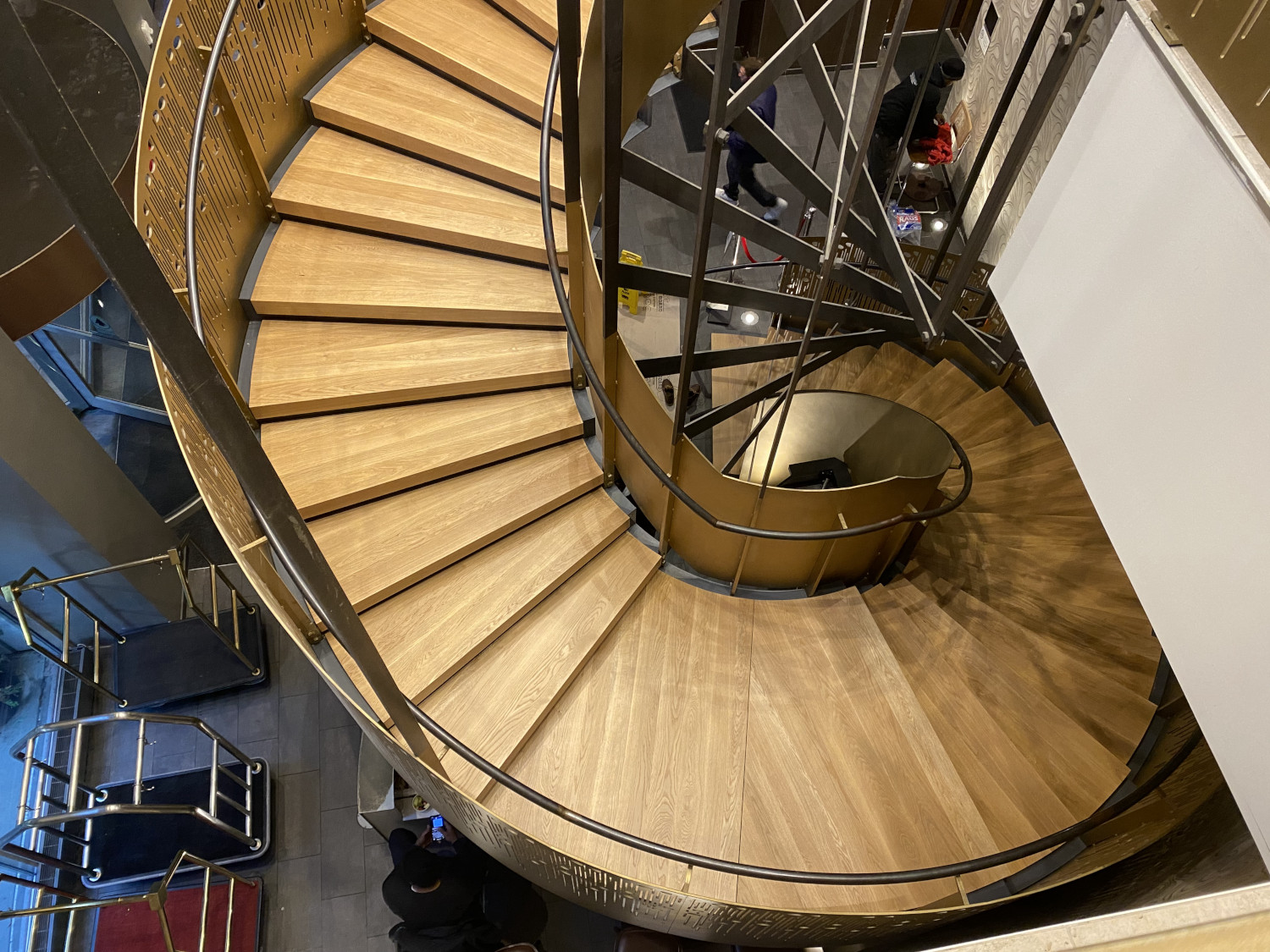How To Level a Floor for Hardwood Installation
Most everyone loves hardwood flooring. That’s because hardwood floors exude timeless elegance and enduring charm. But their beauty rests on a crucial foundation: a perfectly level subfloor.
When hardwood floors are installed on an uneven surface, it can lead to creaking wood floors, warping, and even a floor system failure, robbing your investment of its longevity and appeal.
So, mastering the art of subfloor leveling is paramount before you embark on your DIY hardwood floor journey.
In this comprehensive guide, we dive into the intricacies of subfloor preparation, focusing on the most common culprit – unevenness. We’ll explore various techniques and materials, from traditional floor leveling compounds to self-leveling solutions, empowering you to transform your subfloor into the perfect canvas for your hardwood masterpiece.
Before You Start, You Must Assess the Situation

Before laying the groundwork, quite literally, it is crucial that you embark on an honest evaluation of your subfloor.
Here’s what you need to determine:
- Material: Is the subfloor made of plywood, concrete, or a composite? This is important because different materials require different leveling approaches.
- Extent of unevenness: Use a spirit level and straightedge to measure dips and humps. Minor variations (less than 3/16″ in 10 feet) can be addressed with underlayment, while larger discrepancies need more intensive leveling.
- Existing damage: Check for cracks, water damage, or loose boards. These issues must be addressed before leveling can commence.
Understanding the Various Subfloor Leveling Techniques
When considering how to level a floor, several tools and techniques are at your disposal.
1. Floor Leveling Compounds
Best for: Wood and concrete subfloors with moderate unevenness (up to 1/4″).
Types: Pre-mixed or dry-mix compounds offer various setting times and strengths. Choose a high-strength, self-bonding compound for concrete and a flexible one for wood.
Application: Spread the compound over low spots using a trowel, ensuring smooth transitions. Follow the manufacturer’s instructions for drying times and sanding.
2. Self-Leveling Floor Compounds

Best for: Large, uneven concrete floors (up to 1/2″).
Type: Self-leveling compounds flow and level themselves, creating a smooth surface.
Application: Pour the compound onto the highest point and allow it to spread and self-level. Ensure proper ventilation and follow the manufacturer’s instructions for mixing and drying times.
3. The Shim and Plane Method
Best for: Wood subfloors with localized high spots.
Method: Use shims (thin wedges) to raise low spots and plane down high spots with a hand planer or belt sander. This method requires precision and woodworking skills.
4. Underlayment
Best for: Minor unevenness (less than 3/16″) on any subfloor type.
Types: Various underlayment materials like cork, plywood, or membrane offer soundproofing, moisture control, and slight leveling.
Application: Lay the underlayment according to the manufacturer’s instructions, ensuring proper seams and overlaps.
Other Considerations When Leveling a Floor
Here are some other concerns that should be addressed when leveling a floor for the installation of hardwood flooring:
- Moisture Control: Check for moisture in concrete subfloors using a moisture meter. Excessive moisture can cause problems with both leveling and hardwood installation. Address moisture issues before proceeding.
- Ventilation: Ensure proper ventilation during and after leveling compound application to avoid respiratory irritation.
- Safety: Wear gloves, eye protection, and a dust mask when working with leveling materials.
- Professional Help: Consider consulting a skilled hardwood flooring contractor for complex unevenness or large areas.
How a Pennsylvania Wood Flooring Experts Can Help

Leveling a subfloor for hardwood installation in Pennsylvania requires careful assessment, the right technique, and a touch of patience. By understanding your subfloor, choosing the appropriate method, and following proper procedures, you can create a solid foundation for your hardwood masterpiece, ensuring its beauty and longevity for generations to come. Remember, a level subfloor is not just a technical requirement; it’s an investment in the enduring elegance and value of your hardwood floors.
While a little bit of knowledge and a little elbow grease can go a long way for the DIY warrior who wants to transform their uneven floor into the perfect stage for their dream of a hardwood floor, sometimes it’s best to leave this type of work to the professionals.
As mentioned before, it is critical that your subfloor is even before you attempt to install your hardwood flooring. Even for the most knowledgeable home improvement experts, the process can be quite challenging, and any missteps can be disastrous.
When you contact the hardwood floor experts at Artisan Wood Floors, you can trust that you are reaching out to a wood floor professional with vast experience in installing, repairing, and maintaining hardwood flooring throughout Pennsylvania.
To ensure the best wood floor installation possible, call the Philadelphia wood flooring experts at (215) 515-7355 and ask for Steve. Steve has more than two decades of experience in the wood flooring industry. He and his knowledgeable staff have the expertise to make your wood floor dreams come true.
Recent Hardwood Flooring Projects in Philadelphia & NJ




0 Comments